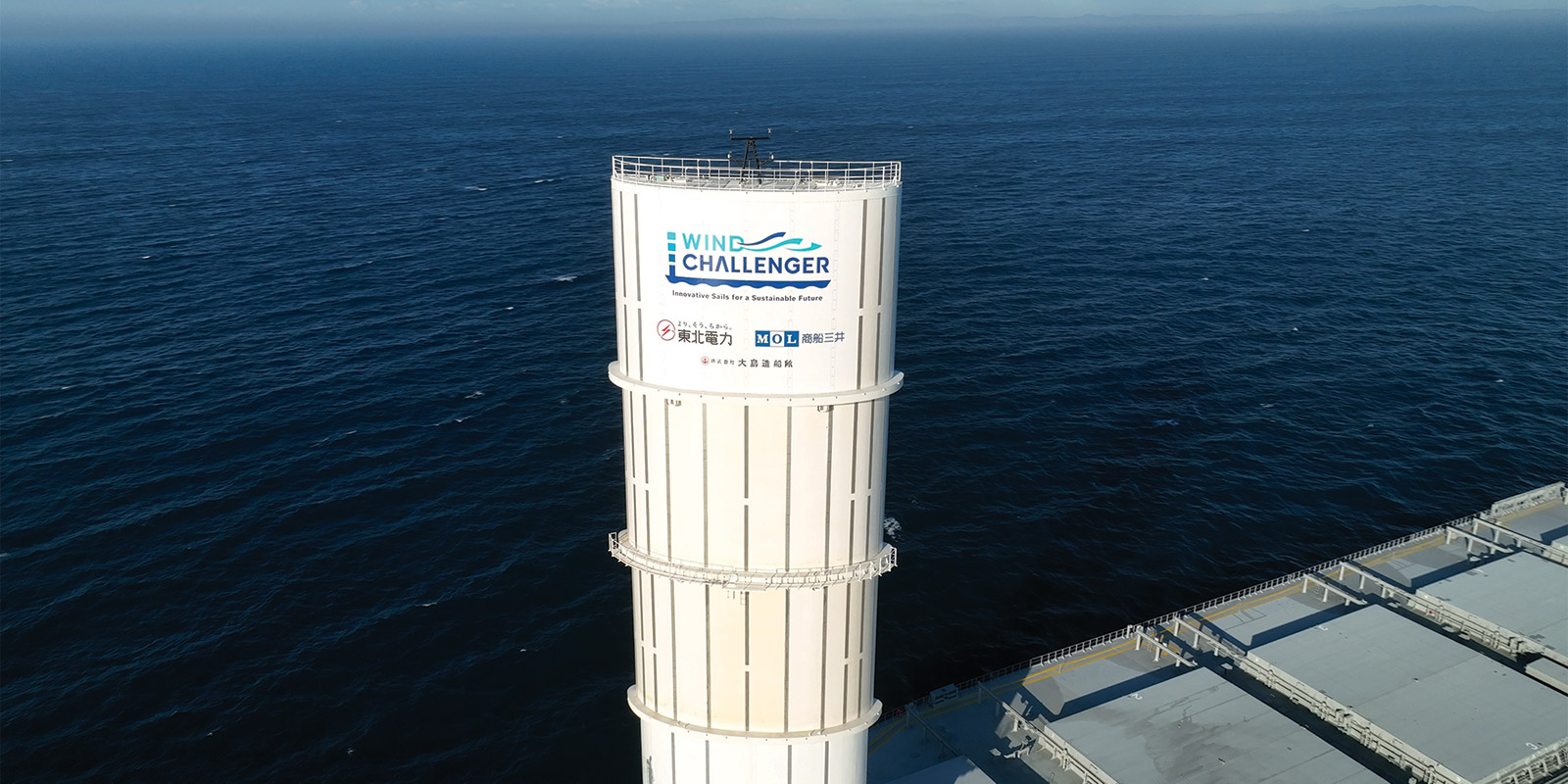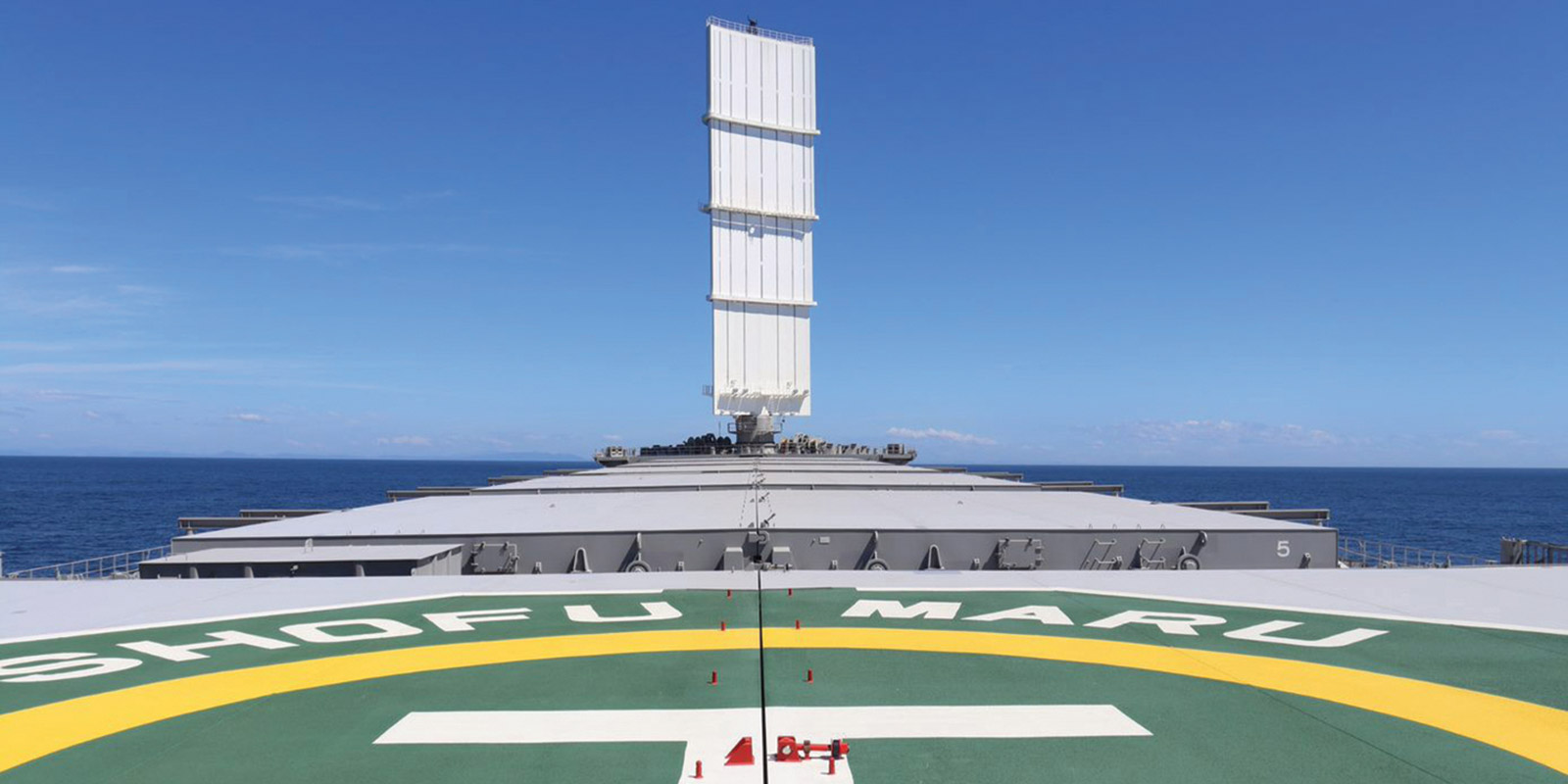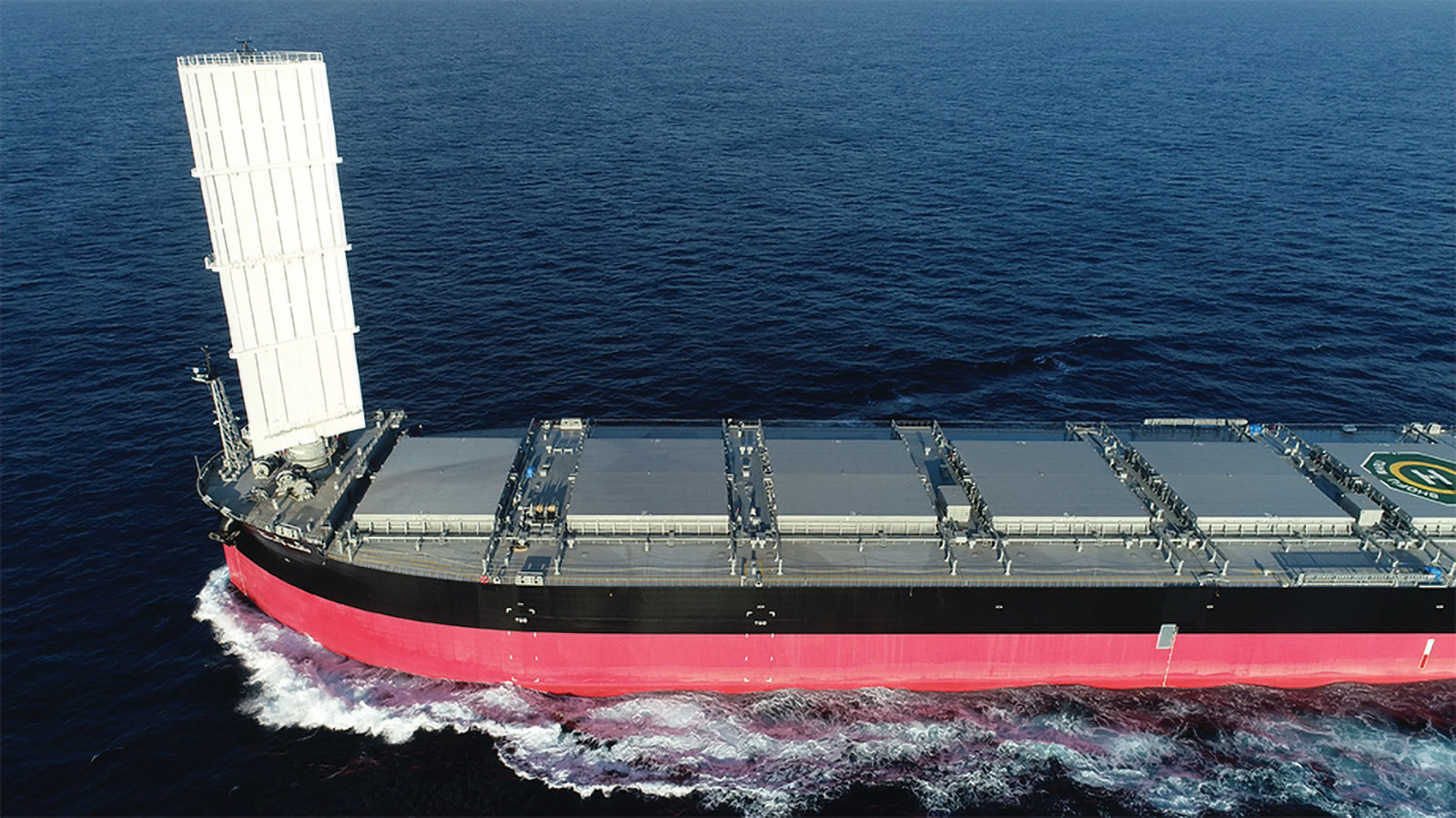Making waves
How Mitsui O.S.K. Lines plans to revolutionize shipping by ushering in a carbon-neutral age
There’s change in the air. According to the International Maritime Organization (IMO), international shipping accounts for 2.2 percent of all annual global greenhouse gas emissions. In 2018, the IMO committed to halving those emissions by 2050 compared to 2008 levels and to help achieve this ambitious objective, shipping companies across the globe have been busy developing greener alternatives to diesel-powered vessels. One of the most promising inventions in the field is the Wind Challenger, a new breed of sail designed by Japanese maritime shipping company Mitsui O.S.K. Lines (MOL). Here’s how MOL plans to harness the power of the wind.
Back to the future
Though sailing ships once ruled the oceans, they gave way to stronger and more practical steam-powered vessels in the 19th century, which were in turn replaced by diesel ships in the 20th century. But with the climate crisis raging, the days of vessels running on fossil fuels may be numbered. Now, a combination of age-old techniques with new technologies could well see sail-powered cargo vessels making a striking comeback. MOL is one of several innovative companies that are working towards greener shipping by implementing wind-assisted propulsion systems in their fleets.
Sail of the century
MOL’s trump card is the Wind Challenger, a giant hard sail that can be installed on the deck of existing cargo ships. The sail adds wind power directly to the ship’s propulsion force, reducing fuel consumption without slowing the craft’s progress. The Wind Challenger is made up of a steel sail base and three vertically moving panels made from GFRP, or glass fiber reinforced plastic. Thanks to this sturdy yet lightweight material, MOL has been able to create a large sail capable of generating maximum wind-assisted propulsive power without affecting the ship’s balance and the amount of freight that the vessel can carry.
 © Mitsui O.S.K. Lines
© Mitsui O.S.K. Lines
The Wind Challenger is controlled automatically by a computer on the vessel’s bridge
Plain sailing
As any wannabe sailor will know, maneuvering even an ordinary sailboat requires extensive knowledge and experience, since the sails’ direction and tension must be adjusted according to the wind. The Wind Challenger, on the other hand, is controlled automatically by a computer on the vessel’s bridge which can easily be operated by any crew member.
The hard sail is equipped with sensors that detect the strength and direction of the wind, automatically extending the sail when conditions are calmer and lowering it when the wind blows too hard. The Wind Challenger’s four 15-meter-wide panels can extend from 23 meters up to a height of 53 meters and rotate automatically based on the wind’s direction. Even when there’s a crosswind, the Wind Challenger is able to push the vessel forward.
 © Mitsui O.S.K. Lines
© Mitsui O.S.K. Lines
Getting back on an even keel
The Wind Challenger’s aim is to help bring shipping’s greenhouse gas emissions down. To calculate the benefits of the propulsion force generated by the Wind Challenger compared to traditional cargo ships, MOL has conducted a series of computational fluid dynamics modeling and wind tunnel experiments.
In a head-to-head simulation of an unassisted 100,000-deadweight-ton bulk carrier (dwt refers to the amount of weight a ship can carry), with one fitted with Wind Challenger the results were encouraging. The simulations showed a five percent annual reduction in greenhouse gas emissions on the Japan-Australia route for vessels with Wind Challenger installed and an eight percent reduction on the route between Japan and the west coast of North America.
 © Mitsui O.S.K. Lines
© Mitsui O.S.K. Lines
Setting sail
The first active Wind Challenger system has been installed on the Shofu Maru, a 100,000-dwt coal carrier that is scheduled to set sail for a two-week journey on the Japan-Australia route in October 2022. While the Shofu Maru only has one hard sail attached to its bow, several Wind Challengers can be installed simultaneously on the decks of bulk carriers, tankers, and liquefied natural gas carriers to increase propulsion force and further reduce emissions. MOL hopes that when the shipping world sees the benefits of harnessing wind power—cutting costs and helping to save the planet—they’ll be all aboard.